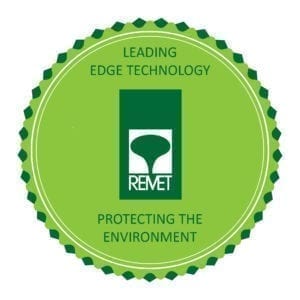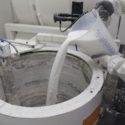pH Control in Investment Casting Slurries
In this post we’ll talk about the measurement and control of pH with Alkaline colloidal silica binders.
What is pH?
As a point of background, I’m told that the modern concept of acidity and basicity was introduced by a Danish scientist Soeren Soerensen in the 1900s. He was a member of the Carslberg University, so probably hoped that one day, all solutions would be measured this way. (Sorry if you don’t get the beer pun)
pH is one of those features that everyone knows about, and few understand, it scares off the uninitiated because it allows one to start a sentence with a lower case character, but is user friendly as it only varies from 0 – 14, a number range that I can quite happily deal with, having only to remove one sock. This isn’t strictly true – it is possible to have negative pH and pH>14, but we are unlikely to come upon them in a shell room environment, so we’ll stick with the High School definition for the time being. It is true, however, that I can count to 14 by removing one sock.
pH expresses how acid or alkali a solution is, where lower numbers are acidic, 7 is neutral, and higher numbers are basic. pH is the negative logarithm, to base 10, of the activity of the aqueous hydronium ion H+, though more frequently it is referred to as the measure of the Hydronium ion concentration [H+].
How is it measured?
Back when I was in school one tested pH spectrophotometrically. This was done by using a specific or universal indicator that created a particular color at a given pH. Samples were compared against a standard when a given color transition occurred. This was the standard route to determine reaction inflections by pH when for example doing gravimetric analysis of alloys. For the record my favorite was bromothymol blue which changed from yellow to blue at pH9. Fascinating!
The truth is that over the past 30 odd years, no one worries much about colorimetric pH analysis and indicator strips, because by far the best way of determining pH is with a relatively small, relatively inexpensive automatic temperature compensating pH meter. These devices are basically a potentiometer with one arm of the bridge being an electrode, and reference.
I know of at least 4 types of electrode, and there’s probably more, so I won’t bother to describe how it works, save to stress the importance of proper laboratory hygiene, the use of good buffers for regular calibration, and proper care and maintenance of the probe itself. So..
Why do we need to monitor and correct pH
If you want the long version, I will refer you to the “Chemistry of Silica” by the good Dr Iler, For those of you who don’t want to plough through Dr Ilers’s work I’ll try to explain.
When colloidal silica is hydrolyzed, it wraps up like a ball of yarn, on the outer face of this ball is silica which forms a bond with free hydroxyl ions [ Si*OH]. If we make the pH more basic, say pH10 we find that the hydrogen becomes free to dissociate so we end up with [Si*O-] and [H+]. The reason being that as pH is increased the concentration of [H+] decreases. This grants us the added bonus that with all the negative charged silica particles present, they are mutually repelling, and as such never get close enough to each other to bond.
As pH falls the degree of dissociation is decreased, and the [O-] becomes more likely to be [OH]. The progressive loss of the negative charge means that the particles can get closer together, until the particles interact and start to gel.
As the gel reaction gathers pace the colloidal silica binder starts to thicken, resulting in increasing thixotropy of the slurry.
What usually happens is that the slurry is actually maintained in process at a consistent viscosity, with the gel reaction occurring, this is achieved by adding excess water such that the silica content is reduced. In effect, dilution means that the silica particles are further apart, and therefore interact less frequently, and a degree of stability is maintained. However, an ever decreasing content of silica, and increasing binder viscosity is never a good thing and eventually the slurry either loses its binding power because the silica is so reduced, or the poor flow characteristic lead to poor shell build resulting in casting defects.
Eventually someone will take the decision to throw away the slurry and replace it. IMHO (as they say on texts) the decision to throw away the slurry is always painful, and nearly always taken too late.
There’s a proverb in English that starts “For the want of a nail the shoe was lost, for the want of the shoe the horse was lost” etc etc. This proverb was never more true than in the care and maintenance of pH in colloidal silica based binders! It’s always better to do a little often, then wait for a disaster to brew up…
So here’s how to maintain the pH in A REMASOL® colloidal silica binder.
Slurry pH can be increased using ammonia water (ammonium hydroxide (NH4OH) or potassium hydroxide (KOH). Both have advantages and disadvantages.
When handled properly, either material can be used.
Ammonium hydroxide decomposes with time and increases the frequency at which pH adjustments must be made. It also has a strong, pungent odour that is always disliked. However, because of its relatively lower pH, it is more easily assimilated into a slurry versus KOH.
The use of KOH will reduce the frequency of adjustment but additional care (because of its strong basic character) must be taken when using KOH for this purpose. Small additions of KOH solution should not detract from the refractoriness of the shell. The following is a recommended procedure for using either product.
Prepare a 2-2.5% solution of KOH (approximately a 0.1 m solution) using distilled water and KOH pellets or flakes. (KOH is very caustic and proper equipment should be used when making or handling a KOH solution.)
Alternatively, 50 ml. of a commercially available 45% KOH solution can be added to 950 ml. of distilled water to produce the desired solution strength. After sufficient mixing has occurred to give a uniform solution, add the necessary quantity of diluted KOH solution to the slurry under good agitation. Good agitation is necessary so that the solution mixes in quickly. Initially, some experimentation will be necessary as to how much KOH solution to add.
Reagent grade ammonium hydroxide (28-30% NH3) should be diluted 50/50 with distilled or Deionized water. The resulting solution should be added slowly with good agitation to the slurry. Since ammonia quickly loses its strength, only the amount needed for one to two days of additions should be made. The container lid should be replaced immediately to prevent loss of ammonia concentration.
Wait thirty minutes while the solution mixes and then test for pH using a standard pH meter.
A good range for slurry pH is 9.4-9.8.
Some foundries prefer to keep slurry pH in a higher range, 9.5-10.0. If slurry pH has been allowed to drop to the 9.0-9.2 level, care must be taken not to shock the slurry.
Adjustments to bring slurry pH into a higher range should be done in two or more steps rather than in one large step. It is easier to keep slurry pH in the desired range by making adjustments before the pH falls too far. If a slurry falls too far in pH (9.0), it may be impossible to bring it back and have it stay high.
If you want further help with pH control, please feel free to write or telephone your local REMET agent or territory manager.
Now there are more elegant solutions to this maintenance program, REMET manufacture binders which have reduced pH sensitivity, and makes some binders which are completely insensitive to pH; so if this is of interest to you, please contact your local REMET Territory Manager.
Usual disclaimers:
SAFETY PRECAUTIONS: Read SDS before using this product.
NOTE: Unless specifically identified as a specification value, the above chemical, physical and particle size distribution values are typical properties. They are not specification values.
Contact your nearest REMET Sales Office regarding product specifications.
Contact your REMET Territory Manager and visit www.remet.com if you have any questions or require additional information.
Information and/or recommendations based on research and technical data believed to be reliable. Offered free of charge for use by persons with technical skills, at their own discretion and risk, without guarantee of accuracy REMET makes no warranties, express or implied, and assumes no liability as to the use of its products or of any information pertaining thereto. Nothing herein is intended as a recommendation to infringe any patent.
< Back to insights



